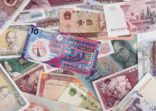In Asia-Pacific including Japan, assets under management in smart-beta ETFs grew by 57.1% between June 2016 and June 2017, to reach $16.9bn.
New Zealand and Australia lead the region in smart beta investment. Roughly 10% of local ETF assets in each of these countries is in smart beta strategies.
Japan and Malaysia each had around 5.5% of local ETF assets invested in smart beta products.
Despite the growth, the amount is still small. Smart beta represents only 4.3% of total ETF assets in Asia-Pacific, which now stand at $390bn, according to a Morningstar report.
Smart beta dwindling?
While smart-beta ETFs in Asia-Pacific are gaining marketshare as a proportion of all ETF products, the global picture is different.
Globally, smart beta has a 19% marketshare in the context of ETF assets. The figure has not changed substantially in the past three years.
Yet over a three-year period, ETF growth has outpaced smart beta growth. Assets under management in ETFs grew to $4.3trn in August 2017 from $2.5trn in August 2014, according to data from Morningstar. The figure represents a 70% increase.
During the same period, assets in smart beta ETFs reached $828bn, up from $506bn, an increase of 64%.
This means that the share of ETF AUM attributable to smart beta products is now lower than three years ago. In fact, smart beta accounted for 19.23% of ETF AUM in August 2017 compared to 19.93% three years earlier, although it was as high as 20.95% in May 2016.
Smart-beta ETF AUM as a share of global ETF AUM

Data: Morningstar, 30 August 2017
FSA excluded data on Chinese ETFs, as they aren’t available with the same frequency as global data. Their AUM is around $31.2bn, or less than 1% of the global AUM.

















